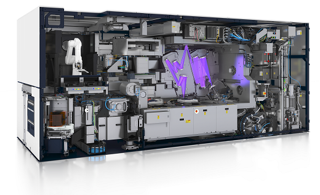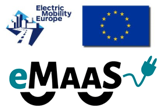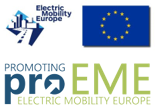In the SEMD group, we are working on several research projects:
ONGOING PROJECTS
- A3 Architecture Overviews (RT1)
 Describing a systems architecture in a comprehensive and widely understandable format is a challenge. This project initially aimed at reverse architecting an existing system's architecture. Over time, the A3 Architecture Overviews (A3AO for short) have been used also to support the design process and to aid in implementing systems engineering. For more information or questions contact Maarten Bonnema.
Describing a systems architecture in a comprehensive and widely understandable format is a challenge. This project initially aimed at reverse architecting an existing system's architecture. Over time, the A3 Architecture Overviews (A3AO for short) have been used also to support the design process and to aid in implementing systems engineering. For more information or questions contact Maarten Bonnema. - Multidisciplinary integration in the product design and development - EPLM2 (RT1 and RT2)
 Due to increasing product complexity, monodisciplinary approaches can threaten the consistency of designs and lead to integration issues. We aim to define and integrate essential engineering design data that can be shared by various disciplines to create a successful product. Our end-goal is to improve interoperability, consistency, and traceability during the design process by applying Systems Engineering and Product Lifecycle Management. For more information or questions contact Maarten Bonnema.
Due to increasing product complexity, monodisciplinary approaches can threaten the consistency of designs and lead to integration issues. We aim to define and integrate essential engineering design data that can be shared by various disciplines to create a successful product. Our end-goal is to improve interoperability, consistency, and traceability during the design process by applying Systems Engineering and Product Lifecycle Management. For more information or questions contact Maarten Bonnema. - Architecture Modelling Framework (RT2, RT3)
 Due to increasing product complexity, monodisciplinary approaches can threaten the consistency of designs and lead to integration issues. We aim to define and integrate essential engineering design data that can be shared by various disciplines to create a successful product. Our end goal is to improve interoperability, consistency, and traceability during the design process by applying Systems Engineering and Product Lifecycle Management. For more information or questions contact Maarten Bonnema.
Due to increasing product complexity, monodisciplinary approaches can threaten the consistency of designs and lead to integration issues. We aim to define and integrate essential engineering design data that can be shared by various disciplines to create a successful product. Our end goal is to improve interoperability, consistency, and traceability during the design process by applying Systems Engineering and Product Lifecycle Management. For more information or questions contact Maarten Bonnema. - Healthy Footwear (RT3)
 The architecture of nowadays conventional footwear is the result of a long history of footwear design, manufacturing, and marketing. In this long history, part of the argumentation behind the architecture has been lost, causing footwear developers to make decisions based on ancient beliefs, habits, and badly underpinned assumptions. Therefore this project has the aim to investigate how footwear developers can be supported in consciously deviating from the conventional architecture, ultimately reducing the occurrence of footwear-induced ailments. For more information or questions contact Winnie Dankers.
The architecture of nowadays conventional footwear is the result of a long history of footwear design, manufacturing, and marketing. In this long history, part of the argumentation behind the architecture has been lost, causing footwear developers to make decisions based on ancient beliefs, habits, and badly underpinned assumptions. Therefore this project has the aim to investigate how footwear developers can be supported in consciously deviating from the conventional architecture, ultimately reducing the occurrence of footwear-induced ailments. For more information or questions contact Winnie Dankers. - NEON "lights the way to zero-emission energy and mobility" (RT1, RT2, RT3, and RT5)
 NEON addresses three interrelated societal challenges: climate action, renewable energy, and smart & sustainable transport. By conducting our research from multiple views and starting points, we seek at growing understanding and facilitating an acceleration towards a sustainable society. We research and develop an integral model architecture and integration mechanism for the NEON models. The architecture and mechanism will allow the other models to be developed largely independently, yet combined will result in coherent integral results. For more information or questions contact Maarten Bonnema or Marcus Pereira Pessoa.
NEON addresses three interrelated societal challenges: climate action, renewable energy, and smart & sustainable transport. By conducting our research from multiple views and starting points, we seek at growing understanding and facilitating an acceleration towards a sustainable society. We research and develop an integral model architecture and integration mechanism for the NEON models. The architecture and mechanism will allow the other models to be developed largely independently, yet combined will result in coherent integral results. For more information or questions contact Maarten Bonnema or Marcus Pereira Pessoa. - SPLASH (RT1, RT2, and RT4)
 Semiconductor devices are advancing rapidly in three aspects: miniaturization of components, device innovations, and material innovations. These advancements result in increasing demands on semi-conductor equipment, putting pressure on, and complicating the equipment development and production processes. Besides, fierce competition in the semiconductor market makes reliability, productivity, cost, and time to market the equipment crucial. In this research project, ASML and the UT will research how to factor in these aspects while increasing the state of the art performance of the equipment, using a systems engineering approach on a technological and organizational level. For more information or questions contact Maarten Bonnema, Marcus Pereira Pessoa, or Kostas Nizamis.
Semiconductor devices are advancing rapidly in three aspects: miniaturization of components, device innovations, and material innovations. These advancements result in increasing demands on semi-conductor equipment, putting pressure on, and complicating the equipment development and production processes. Besides, fierce competition in the semiconductor market makes reliability, productivity, cost, and time to market the equipment crucial. In this research project, ASML and the UT will research how to factor in these aspects while increasing the state of the art performance of the equipment, using a systems engineering approach on a technological and organizational level. For more information or questions contact Maarten Bonnema, Marcus Pereira Pessoa, or Kostas Nizamis.
FINISHED PROJECTS
- ProEME ( RT1, RT3, and RT4)
The goal of this project to increase the uptake of e-mobility in Europe by building capacities, networks, and tools to reach decision-makers and contribute to positive investment decisions for Electric Vehicles (EVs). The approaches and decision support tools developed shall serve as blueprints for further development of the EV-market and expand the scientific findings of electric mobility.
- eMaas ( RT1, RT3, and RT4)
 The electric Mobility as a Service (eMaaS) project aims at making eco-friendly mobility more accessible. eMaaS combines highly innovative technology and new business models to create the conditions for large scale adoption of Electric Vehicles (EV) by developing and promoting an open eco-friendly mobility ecosystem.
The electric Mobility as a Service (eMaaS) project aims at making eco-friendly mobility more accessible. eMaaS combines highly innovative technology and new business models to create the conditions for large scale adoption of Electric Vehicles (EV) by developing and promoting an open eco-friendly mobility ecosystem. - WeCoRD (RT1)
 The Open Educational Resources on Enabling Technologies in Wearable and Collaborative Robotics (WeCoRD) project will establish a strategic partnership for modernizing postgraduate and continuous professional education in the field of robotics, making it more relevant to the users, labor market, and industry needs, boosting skills and employability of learners. For more information or questions contact Kostas Nizamis.
The Open Educational Resources on Enabling Technologies in Wearable and Collaborative Robotics (WeCoRD) project will establish a strategic partnership for modernizing postgraduate and continuous professional education in the field of robotics, making it more relevant to the users, labor market, and industry needs, boosting skills and employability of learners. For more information or questions contact Kostas Nizamis. - CHEtGUM: Human-Machine cooperation and societal impact in the development of a chewing gum removal robot (RT3 and RT4)
 Chewing gum removal from public places is a labor-intensive and costly task, creating the demand for a responsible way of cleaning and keeping public spaces clean. Our goal is to develop a cleaning robot, by the integration of mechatronics, with a responsible design, aware of its social impact, and finally, the symbiosis of automation and human supervision. For more information or questions contact Kostas Nizamis.
Chewing gum removal from public places is a labor-intensive and costly task, creating the demand for a responsible way of cleaning and keeping public spaces clean. Our goal is to develop a cleaning robot, by the integration of mechatronics, with a responsible design, aware of its social impact, and finally, the symbiosis of automation and human supervision. For more information or questions contact Kostas Nizamis. - OSCAR (RT3, and RT4)
Cleaning has a high physical and cognitive load for the cleaner. Also, the cleaning sector is increasingly confronted with new technologies that might have unforeseen consequences – especially robotics. On the one hand, robotics can be seen as a threat when the robot replaces the human being, on the other hand, there are also opportunities if a robot supports the cleaner, for instance when the cleaner gets older. Moreover, robotics offers possibilities to create space for work that cannot be done now. The central challenge for the responsible development and implementation of robots is to realize a concrete robotic cleaning system by means of an iterative design process to develop the current first idea into a concrete prototype. For more information or questions contact Kostas Nizamis.

